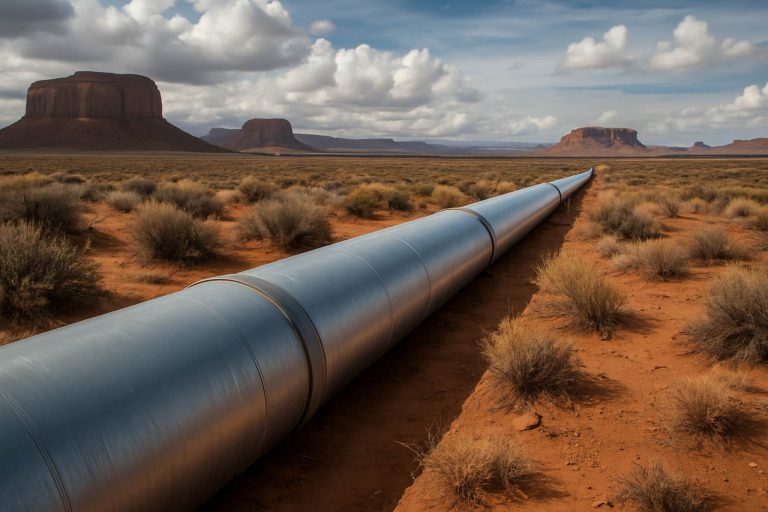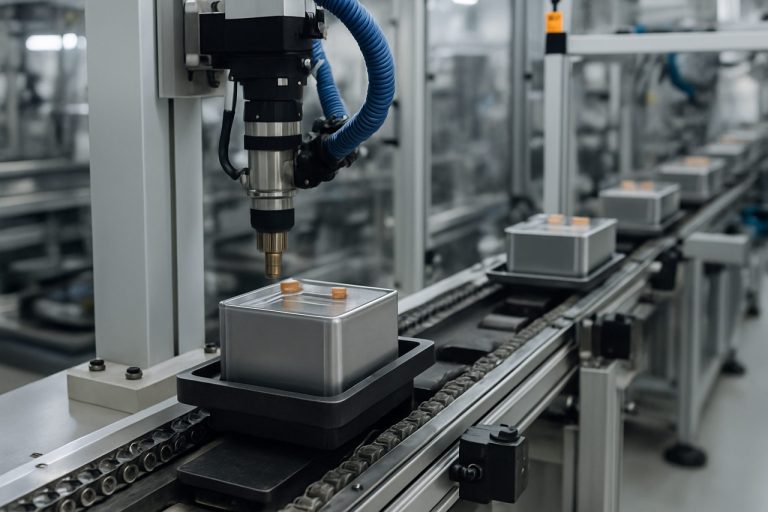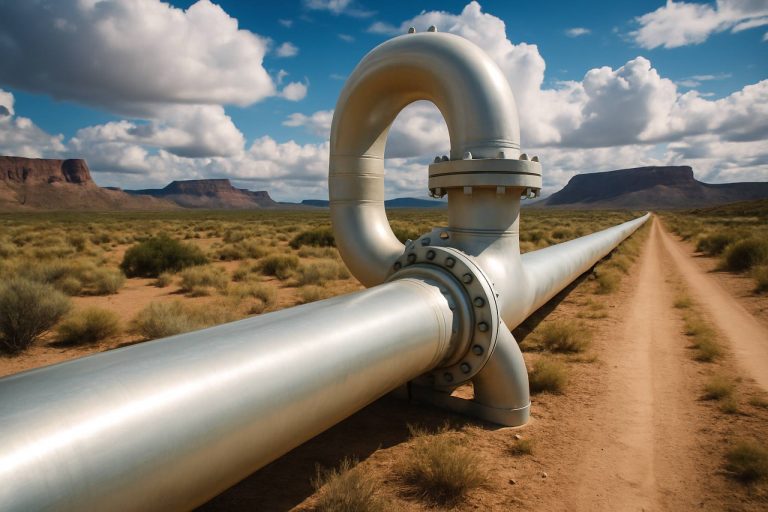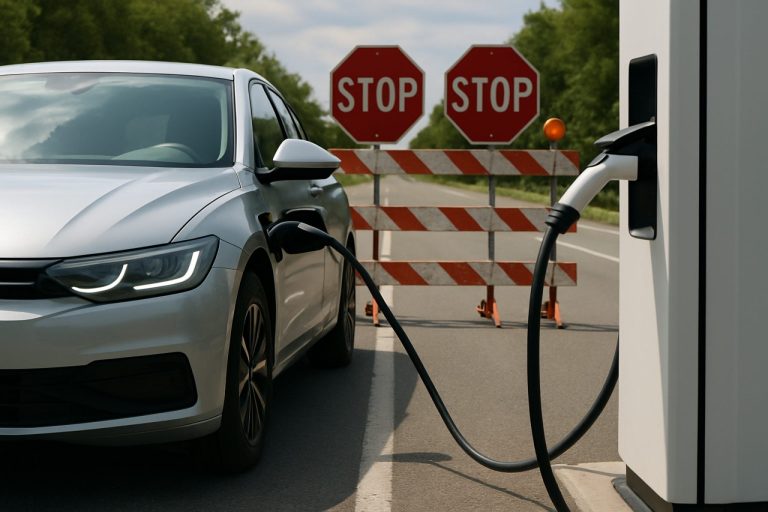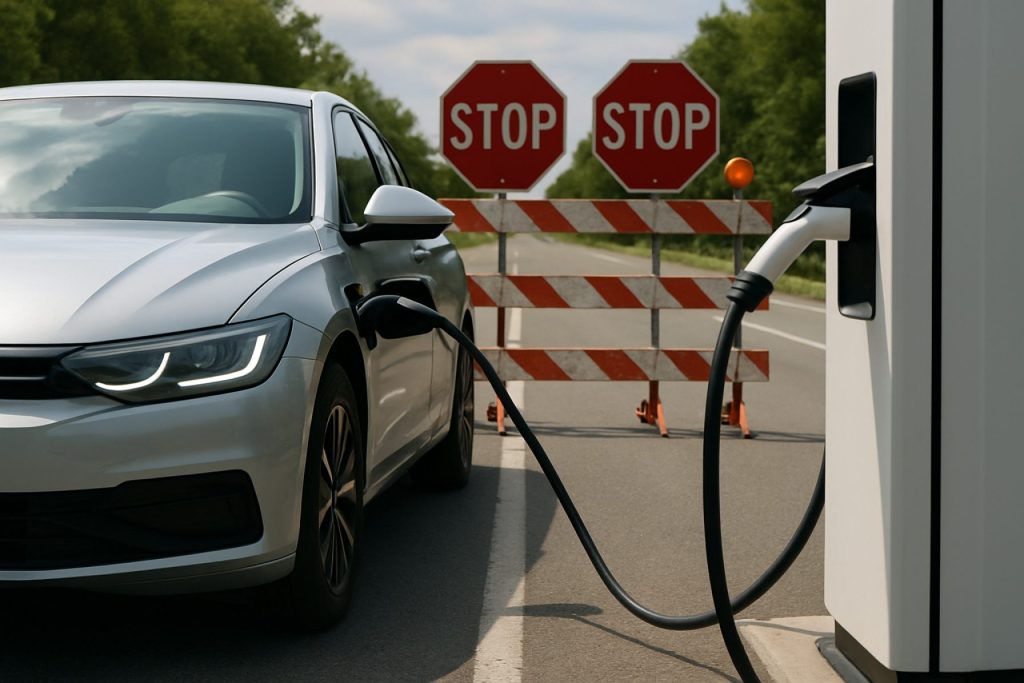
- The U.S. has blacklisted 134 Chinese companies, including CATL, a key global supplier of lithium-ion batteries, causing major disruption in the electric vehicle (EV) industry.
- Automakers like Tesla, Ford, and BMW heavily rely on CATL, whose scale and technology are unmatched, making quick replacements difficult and risking higher EV costs and production delays.
- China controls about half the world’s lithium-ion battery supply, with CATL alone accounting for over a third of global capacity, highlighting deep Western reliance on Chinese supply chains.
- Additional Chinese giants like Tencent and CXMT face restrictions, intensifying supply chain challenges and heightening geopolitical tensions over EV technology and national security.
- Continued escalation could lead to shortages of essential materials like rare earths and lithium, threatening the future growth of clean transportation and global electrification goals.
A cold wind sweeps through the electric vehicle (EV) industry, bringing with it the friction of geopolitics and high stakes. The United States has drawn a new line in the sand, adding 134 Chinese firms to an ever-expanding blacklist, casting a shadow over a sector that only yesterday brimmed with optimism. Among the newly targeted companies lies a true colossus—CATL, the world’s preeminent supplier of lithium-ion batteries.
For years, CATL powered the ambitions of global automakers. Its lithium cells fueled not just the roaring acceleration of high-performance Teslas, but also the silent glide of family SUVs and urban commuters. Walk through any assembly line at a leading car manufacturer and you’ll find CATL at its core, quietly weaving together the battery packs that animate the metallic dreams of millions.
But America’s blacklist—citing concerns of military association—has thrown a wrench into these well-oiled cogs. Tesla, Ford, BMW: all dependent on CATL’s innovations, now find themselves in limbo. Industry insiders suggest no rival can match CATL’s scale or technical prowess; replacing those battery cells won’t be as simple as flipping a switch. Already, whispers course through Detroit and Silicon Valley of rising costs and delayed production—threats that may soon materialize as scarcity on dealer lots and price tags climbing ever higher.
Still, this blockade stretches far beyond one factory or one company. Tencent, China’s internet titan, and CXMT, a major chipmaker, have also landed in Washington’s crosshairs. The stated rationale: national security. The consequence: the most significant disruption to global supply chains in memory—and a risk many EV advocates had not fully priced in.
The numbers underscore the gravity. China supplies roughly half of the world’s lithium-ion batteries, with CATL alone controlling more than a third of global capacity. Disentangling Western EV ambitions from Chinese supply lines, especially on America’s ambitious timetable—in which half of all new vehicles will be electric by 2030—borders on the impossible.
Even as American policymakers talk tough on economic security, the ripple effects grow. Chinese officials denounce Washington’s moves as deliberate economic sabotage and hint at countermeasures: tighter controls on the export of rare earths, lithium, and cobalt—raw materials the U.S. cannot source at home at the quantities needed. It is a chess match, each move echoing across factory floors and trading desks from Shanghai to Silicon Valley.
Now, as both sides escalate, legal challenges swirl in international courts and forums. Multinational automakers re-examine contracts, hedge their bets, and quietly search for alternative suppliers. The specter of delays, price hikes, and interrupted progress looms large.
The future of clean transportation is at a crossroads. On one hand, the promise of electric mobility—zero-emission cars, energy independence, and whispered motors gliding through city streets—seems closer than ever. On the other, the race is threatened by geopolitical storms that could upend decades of investment and innovation.
The takeaway is stark: the world’s drive towards electrification depends not just on engineering prowess, but on the delicate and often unpredictable currents of global politics. As the landscape shifts, consumers, automakers, and policymakers will need to navigate carefully—or risk seeing the electric revolution stall just short of its destination.
For further context on the evolving geopolitics and advances in electric vehicles, reputable sources like NYTimes and Bloomberg provide ongoing insights and analysis.
This EV Bombshell Is Shaking the World: Why the CATL Blacklist Ripples Far Beyond Cars
U.S. Blacklists Chinese EV Supply Titans: What It Really Means For Drivers, Automakers, and the Global Clean Energy Race
The U.S. blacklisting of 134 Chinese firms—including battery heavyweight CATL, chipmaker CXMT, and tech giant Tencent—has jolted the electric vehicle (EV) industry. The shockwaves reach from Silicon Valley all the way to urban showrooms, putting EV market progress at serious risk. But what does a move like this actually mean for automakers, technology, EV owners, and the global race to electrify transportation? Here are additional, crucial facts that drive the story forward—and actionable tips for consumers and industry players.
—
Additional Fast Facts and Expert Insights
1. CATL’s Market Dominance is Unrivaled
– CATL (Contemporary Amperex Technology Co. Ltd.) supplies over 30% of global lithium-ion battery capacity—more than Panasonic, LG Energy Solution, and Samsung SDI combined (SNE Research, 2023).
– Major automakers relying on CATL include not just Tesla, Ford, and BMW, but also Hyundai, Toyota, and Volkswagen.
– CATL’s technical edge: The company leads in high-nickel chemistries and sodium-ion battery technology, powering advances in fast-charging and battery longevity.
2. Geopolitical Risk to EV Rollouts is Real
– The Biden administration’s goal: 50% new U.S. vehicles electric by 2030. This relies heavily on Chinese supply chains, which account for 60%+ of global battery manufacturing and 75%+ of critical battery chemicals (IEA, Global EV Outlook 2023).
– Replacing CATL with U.S. or European suppliers is challenging due to cost, scale, and technical gaps. New U.S. gigafactories are underway but may take years to scale.
– Blacklisting companies complicates supply contracts, with legal uncertainty over parts already in transit or production.
3. Raw Material Constraints Could Grow Worse
– China refines over 60% of the world’s lithium and 80% of cobalt. Restrictions on these exports would not just hinder EV batteries, but solar panels, grid storage, and military tech.
– The U.S. has sparse domestic lithium production (mainly Nevada), with most supplies secured from Australia (roughly 20%) and South America (approximately 15%). New mines face regulatory and environmental pushback.
4. Global Supply Chain Security & Sustainability Concerns
– National security is cited by the U.S. as the main rationale, but automakers fear “single point of failure” risk if Chinese components are suddenly cut off.
– Companies are rapidly evaluating battery recycling (so-called “urban mining”), second-life batteries, and diversifying to Southeast Asian or European suppliers to reduce dependence on China.
– Environmental groups warn that rushing alternative mining without proper oversight could damage sensitive ecosystems worldwide.
5. EV Price and Availability: What Consumers Need to Know
Short Term (2024-2025)
– Potential shortages of EV batteries could raise car prices by $1,500–$3,000 or delay new models (Reuters, 2024).
– Expect supply chain hiccups for high-demand models—especially luxury or long-range EVs.
Medium Term (2025-2030)
– If non-Chinese suppliers ramp up (e.g., Sweden’s Northvolt, U.S. Gigafactories by Tesla and GM), pricing could stabilize—but not before industry turbulence.
6. Real-World Life Hacks for Consumers
– If you’re considering an EV, check the battery supplier and ask about warranty and long-term support—this matters if supply interruptions hit.
– Watch for EV incentives: Governments may boost tax credits for cars with U.S.- or EU-based batteries.
– Explore leases or certified pre-owned EVs to minimize risk during uncertain times.
—
Reviews & Comparisons: Alternatives to CATL-Powered EVs
– Panasonic and LG Energy Solution (South Korea/Japan) are expanding outside China, but currently focus on select models (notably Tesla and European marques).
– U.S.-based battery startups—QuantumScape (solid-state), Redwood Materials (recycling), and SES AI (hybrid cells)—are promising but years from mass production.
– Europe’s Northvolt and ACC show promise, but volumes and cost competitiveness remain uncertain in the short term.
—
Controversies & Limitations
– Critics argue the blacklist could slow the global transition to clean energy, making EVs less accessible and increasing emissions in the near term.
– There is also pushback from environmental groups regarding the escalation of mining in vulnerable regions outside China.
– Former automaker executives, like Bob Lutz (ex-GM VP), caution that “moving supply chains overnight is fantasy; expect pain at the dealership.”
—
Market Forecasts & Industry Trends
– Global EV sales are still projected to rise, topping 17 million in 2024 (IEA), but growth may slow in the U.S. if battery bottlenecks persist.
– Policymakers in Europe and the U.S. are accelerating “friendshoring” (sourcing from allied countries) and domestic battery incentives.
– Expect a renewed focus on battery innovation (solid-state, sodium-ion, and high-recycled content) to mitigate future political shocks.
—
Top Questions Answered
Q: Will this make EVs more expensive?
A: In the short term, yes—unless governments step in with new subsidies or enforce price caps.
Q: Are U.S. automakers prepared?
A: Most are accelerating plans for U.S. and Europe-based factories, but any significant ramp-up will take at least 2–4 years.
Q: What if China counters with rare earth or lithium export limits?
A: Prices for everything from batteries to wind turbines and smartphones could spike, slowing many green tech rollouts.
Q: Is it safe to buy a CATL-based EV now?
A: Yes, but ask your dealer about parts availability and battery warranties, and monitor manufacturer updates.
—
Actionable Recommendations & Quick Tips
– Automakers and suppliers: Start contingency planning for alternative sourcing and recycling partnerships.
– Policymakers: Accelerate domestic battery and critical mineral investments while ensuring environmental standards are enforced.
– Consumers: Ask informed questions at the dealership. If buying or leasing, scrutinize battery warranties and potential supply chain risks.
– Watch trustworthy media like NYTimes and Bloomberg for up-to-date industry analysis.
—
Conclusion: The Road Ahead
The U.S.-China supply chain standoff reminds us that electrification depends on both technology and global diplomacy. Expect higher volatility in pricing, potential model delays, and a renewed scramble for local innovation. For EV fans, the best strategy: stay informed, shop smart, and watch as the industry races to adapt to a new, more fractured world order.
